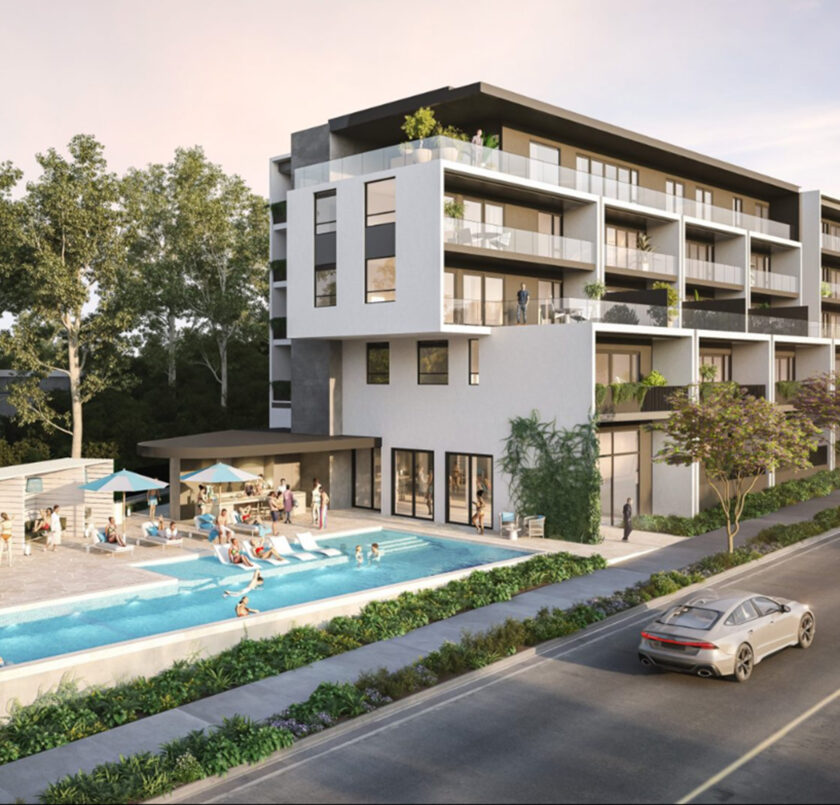
Pool Barrier Compliance in Hotels & Apartments: Lessons from the Brixton Case
As poolside amenities become increasingly integrated into Class 2 apartments and Class 3 hotels, the challenge of ensuring compliant and defensible barrier strategies under the National Construction Code (NCC) has never been more critical, especially where buildings interface directly with outdoor swimming pools.
A recent South Australian court decision (Brixton v City of Holdfast Bay) sharpened the industry’s focus on what constitutes “immediate pool surrounds,” and what access control measures are required to satisfy the NCC’s Performance Requirements.
The Core Issue: Structures Opening into the Pool Area
At TF Certifiers + Consultants, we frequently assist design teams in resolving scenarios where ancillary rooms, such as saunas, sanitary facilities, and even pool plant rooms, are located within the pool enclosure. The key question is simple:
Does a structure that opens into the pool area require a compliant barrier or control measures?
Deemed-to-Satisfy Limitations
The NCC’s Deemed-to-Satisfy (DTS) pathway, through AS 1926.1 and AS 1926.2, provides prescriptive rules for swimming pool barriers. However, when it comes to buildings located within the pool enclosure, the Standards have historically lacked clarity — and that’s exactly what the Brixton case exposed.
While AS 1926.1 includes provisions for child-resistant doorsets, these apply only in tightly defined circumstances, such as access to indoor pools, and don’t explicitly address whether a structure like a pool house, WC, or plant room is allowed within the enclosure. More importantly, the Standards do not clearly state whether a door from such a structure, if already inside the fenced area, constitutes “access to the pool area” under the DTS rules.
This created a grey zone. Designers and certifiers were left to interpret:
- Does the DTS apply to buildings entirely inside the barrier?
- Is a door from a room already within the enclosure still considered a regulated point of entry under AS 1926.1?
- And if the structure doesn’t provide access from outside the enclosure, is it caught by the DTS at all?
These questions were not answered by the Standards themselves, and neither AS 1926.1 nor AS 1926.2 definitively resolved whether internal structures with doors to the pool required separate treatment or compliance. That ambiguity allowed for divergent interpretations across jurisdictions — until Brixton highlighted the risk of relying on assumed exclusions.
When the DTS Stops, the Performance Requirement Starts
When DTS compliance is unclear or ambiguous, the obligation defaults to the wording in the performance requirement, in this case G1P2 (for Class 2–9 buildings) or H7P1 (for Class 1), which share identical phrasing. These provisions require that:
“A barrier must restrict the access of young children to the pool and the immediate pool surrounds.”
“immediate pool surrounds” means the area inside the barrier. It includes the pool deck, circulation space, and any area functionally connected to the pool. The Brixton decision confirmed this by treating an internal pool house as part of the surrounds.
So, if a child can walk from a WC or sauna through a door and be standing poolside, that space becomes part of the surrounds and triggers G1P2 obligations.
Our Interpretation in Practice
We apply the Brixton reasoning consistently: the technical classification of the room (Class 10a, habitable or non-habitable) is irrelevant. What matters is:
- Does it open into the pool area?
- Could a child access the pool unsupervised through it?
If yes, then you must either:
- Exclude the room from the enclosure (relocate it or fence it off), or
- Treat the doorway as part of the pool barrier and install fully compliant child-resistant access controls (self-closing, self-latching, >1500mm latch height), justified via a Performance Solution.
What This Means for Your Project
If your Class 2 or 3 development includes:
- WCs, saunas, or plant rooms within the pool enclosure, and
- Doors opening directly to the pool area…
…then you are not compliant under DTS, and must take one of the following actions:
- Install physical fencing between the room and the pool;
- Relocate the structure outside the enclosure;
- Or, develop a Performance Solution that:
- Demonstrates child access is effectively restricted;
- Addresses operational risks (e.g. doors propped open, guest misuse);
- Aligns with the NCC intent under G1P2.
Our Position
At TF Certifiers + Consultants, we interpret the NCC through both its legislative intent and practical application. Following Brixton, our view is clear:
Any structure with a door opening into the pool area is either outside the enclosure, or it must comply via a documented, defensible Performance Solution.
This applies regardless of classification. Until further case law or code clarification occurs, we continue to advise that barrier compliance is based on real-world access, not technical labels or assumptions about risk.

